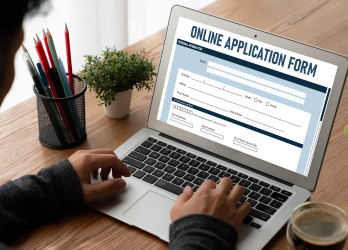Digital grant applications in the U.S. demand a more user-centric approach. Unfortunately, many current systems are riddled with usability flaws that create significant hurdles for applicants. Complex interfaces, unintuitive navigation, and lack of accessibility barriers can lead to incomplete or incorrect submissions, hindering efficient allocation of vital funds.
A 2021 Government Accountability Office (GAO) report underscores this reality, highlighting applicant struggles with outdated and non-intuitive systems. The pandemic’s shift to online processes further exposes these flaws, making the need for improvement more critical than ever.
Usability Testing as the Key to Unlocking Efficiency
Usability testing is instrumental in evaluating how users interact with a system. By observing real users as they navigate the application process, we gain invaluable insights that inform design improvements. These insights ensure the system truly meets the needs of its users, streamlining the application process and ultimately maximizing the impact of grant programs.
Advanced Usability Testing Approaches for Grant Applications:
- User-Centered Design (UCD): This approach places the applicant at the heart of the design process. Techniques like user personas and journey mapping help developers understand the diverse needs of applicants, resulting in intuitive interfaces and a user-friendly experience.
- Remote Usability Testing: Advanced tools like ‘UserTesting’ and ‘Lookback’ allow us to gather diverse feedback from applicants across the country, ensuring a comprehensive understanding of how different user groups interact with the system.
- A/B Testing: This method allows us to compare two versions of a system element, such as a form layout or navigation path. By presenting users with different variations and analyzing their interactions, we identify the most effective design choices. A/B testing is instrumental in optimizing specific aspects of the application process for maximum efficiency.
- Accessibility Testing: Compliance with accessibility standards like Section 508 of the Rehabilitation Act is crucial. Tools like ‘Axe’ and ‘Wave’ help identify potential issues, while manual testing with users who have disabilities provides the most comprehensive insights. This dual approach ensures all users, regardless of ability, have equal access to the grant application process.
- Heatmaps and Click Tracking: Tools like ‘Hotjar’ and ‘Crazy Egg’ visualize user interactions, revealing where users click, scroll, and spend their time. This data pinpoints pain points and areas of confusion, enabling targeted improvements that significantly enhance the overall user experience.
Real-World Success Stories:
The U.S. Department of Education’s Grants.gov system exemplifies the power of these advanced testing methods. By embracing UCD principles and conducting extensive remote usability testing, Grants.gov achieved significant improvements in navigation and user-friendliness. This translates to higher completion rates and a more satisfied applicant pool.
Similarly, the National Institutes of Health (NIH) utilized A/B testing and heatmaps to refine their grant application portal. Their efforts resulted in a streamlined application process, fewer errors, and an overall improved applicant experience.
Towards a More Equitable and Efficient Future
Enhancing UX in government grant applications is not about aesthetics—it’s about efficiency, accessibility, and equity. Advanced usability testing approaches hold the key to achieving these goals. By adopting these methods, U.S. government agencies can ensure their grant application systems meet the needs of all users, ultimately leading to a more efficient and equitable distribution of critical resources.


